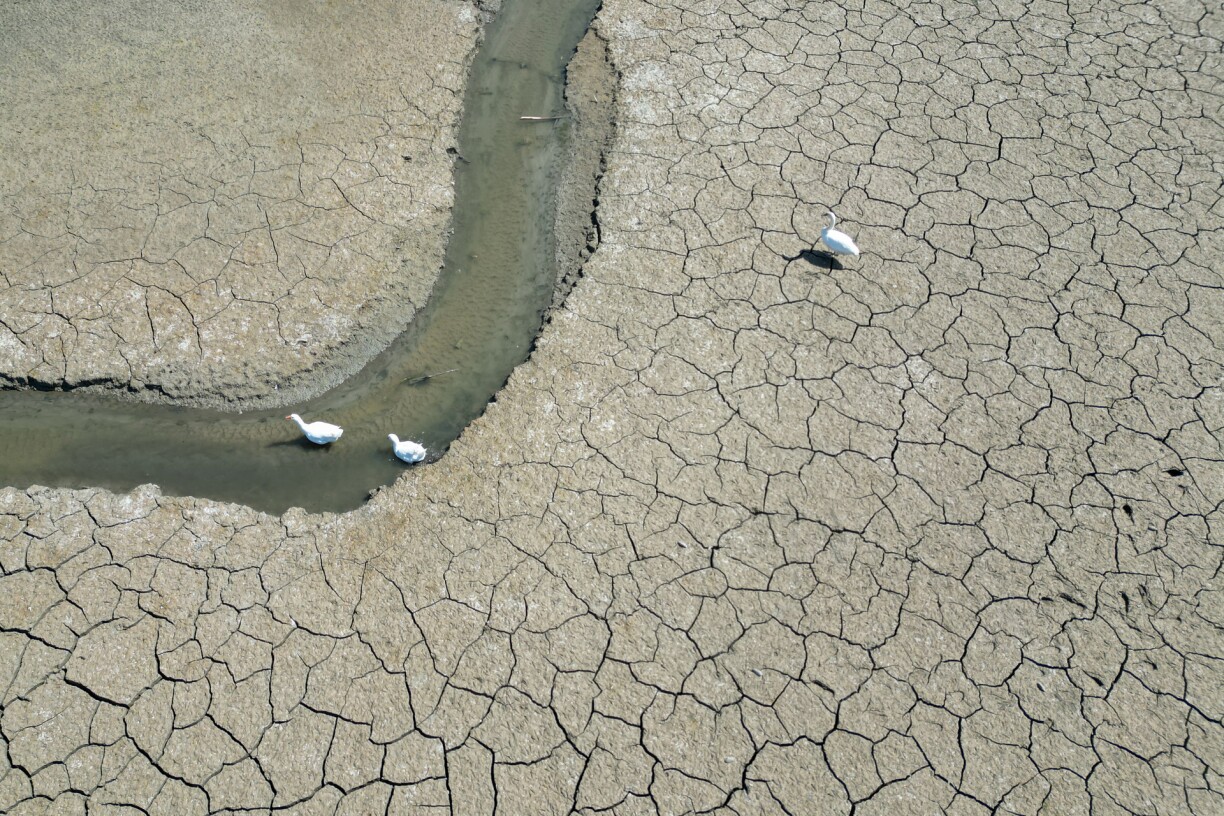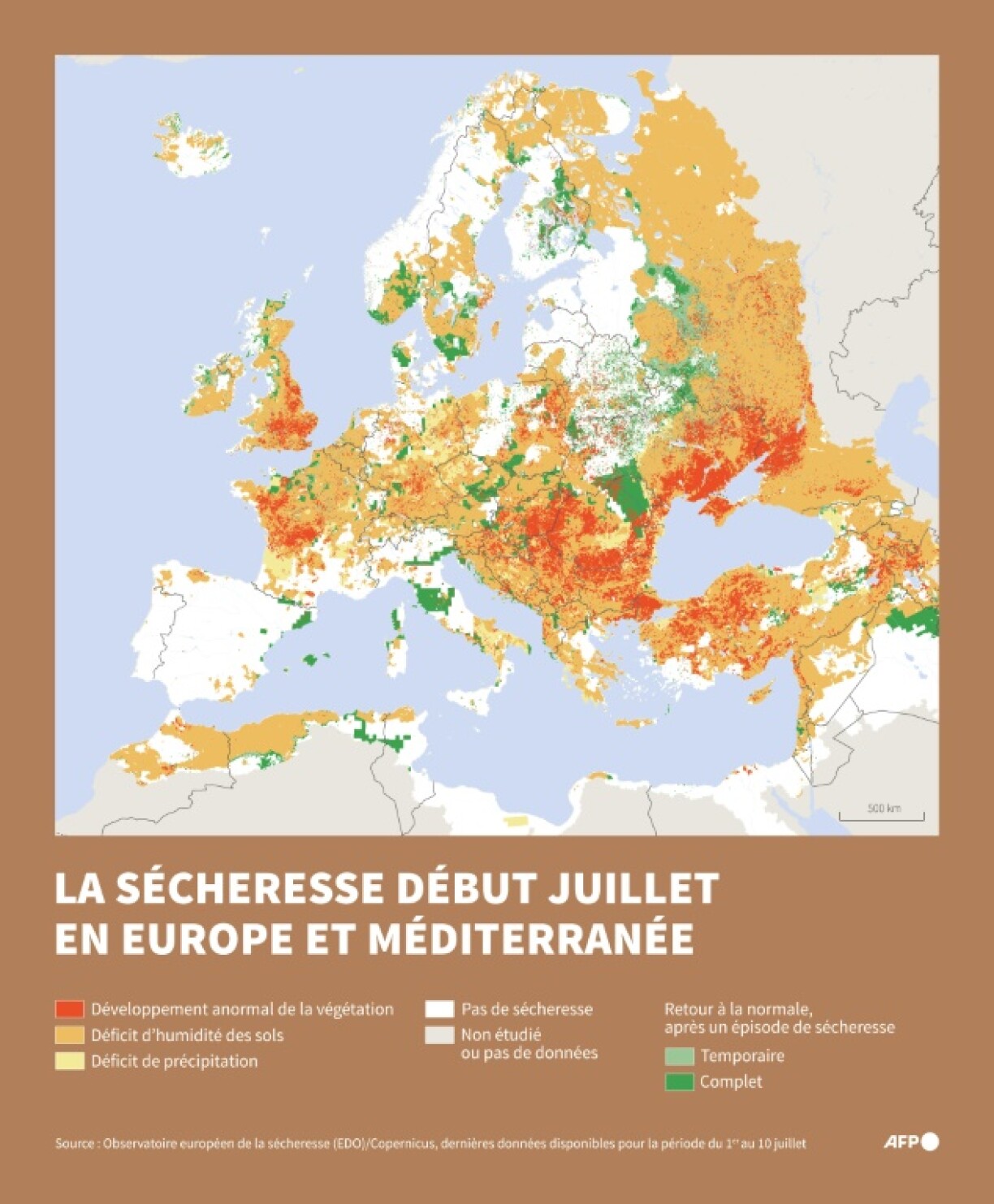
More than half (52%) of soils across Europe and the Mediterranean basin suffered drought conditions in early July, according to an AFP analysis of European Drought Observatory (EDO) data.
This marks the highest level recorded for the first ten days of July since monitoring began in 2012, standing 21 percentage points above the 2012-2024 average.
While slightly improved from late June’s record 55.5% drought coverage, the situation remains severe. The EDO’s composite indicator – which assesses precipitation, soil moisture, and vegetation health – classifies drought intensity across three escalating tiers: watch, warning, and alert.

The crisis is most acute in Eastern Europe, where Kosovo, Serbia, and Bulgaria report near-total soil drought exposure (approaching 100%), with over one-third of their territories under the highest “alert” classification. Bulgaria’s worsening water scarcity prompted mid-July supply restrictions affecting 156,000 residents.
Hungary experienced a dramatic deterioration, with alert zones expanding from 21% to 47% of national territory between late June and early July.
The eastern Mediterranean faces compounding challenges. Armenia reports 95% drought exposure, while Turkey’s 77% drought-affected landscape, coupled with strong winds, has fuelled hundreds of wildfires. Syria confronts both agricultural collapse, with wheat harvests at risk, and food insecurity threatening 16 million people according to UN assessments.
Conditions vary significantly across Western Europe. The United Kingdom saw alert zones expand by over 6 percentage points to 18% of its territory. France reports 12% of land under alert, concentrated in western regions, with two-thirds of the country experiencing some drought effects. By contrast, Spain and Portugal remain relative exceptions with minimal drought impacts at 6% and 1% respectively.